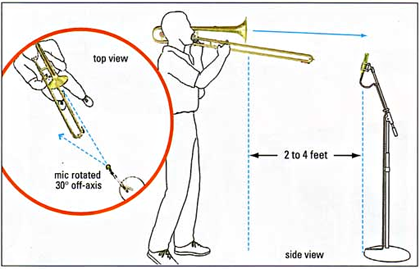
The diagram displays the optimal way of recording a Trombone
The Common consensus for the best type of microphone to use is a ribbon microphone, as they are known for recording the sound closest to what our ears hear.
Sources:
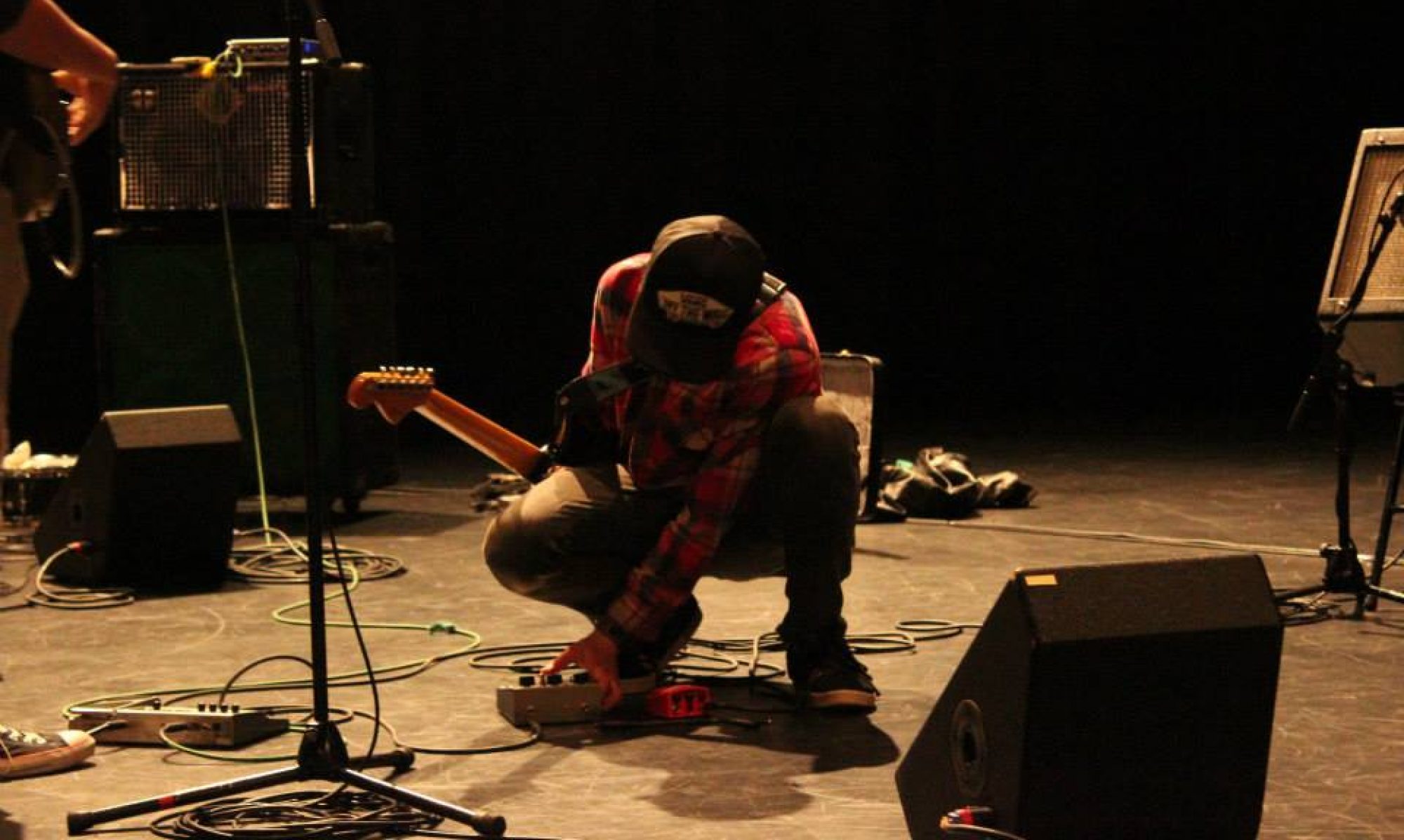
Music Production and Technology

The diagram displays the optimal way of recording a Trombone
The Common consensus for the best type of microphone to use is a ribbon microphone, as they are known for recording the sound closest to what our ears hear.
Sources:
Blumlein Technique
This technique uses two figure-of-eight pattern ribbon mics as the benchmark for producing an authentic representation of a performance in a room. The Blumlein method uses the two mic elements angled at 90 degrees and mounted in close proximity to each other along the vertical axis.
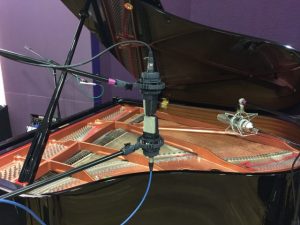
How it works:
CLARINET MIKING TECHNIQUES
By Cavin Lee
Resource #1
In this resource, Range of Sounds, Robert Ruby blogs on recording clarinet in a studio. He recommends using a large diaphragm condenser microphone, Neumann U87. It is known to highlight high frequency sounds. It would also be useful for if the player and producer wants to capture a breathy production. However, if they seek smooth tones, the ribbon mic is the best choice. Ribbon mic’s are known for the dark and warm tone but also highly responsive to the EQ. The clarinet should be 1-2 feet away from the microphone if the person seeks a bright and modern tone and 4-8 feet for a classical-like sound.
Resource #2
From 1:56 to 2:40, the speaker begins talking of recording techniques for the clarinet. He recommends using the AT4040 Cardioid Condenser microphone and to place it 10 inches away aimed at the bottom of the right hand. That way, the producer can get a mix of the clarinet sounds and the finger noise. He also mentions that miking the bell of the clarinet is the not the best choice as not all the sounds will come from the bell. It will also come from the empty holes that are not played.
https://www.soundonsound.com/techniques/piano-recording
im not a drum player but i found it interesting.
My first resource is one more or the whole process of getting a good vocal recording from microphone choice to how your room should look. It’s a in-depth guide I strongly suggest if you have or don’t have experience. It’s valuable to understand that a good microphone doesn’t necessarily mean a good recording. Click here to be a vocal recording master!
If you want a more compact lesson how to to prepare from someone with a lot of experience, this is how Neal Cappellino gets ready for a vocal tracking session. The video is 22min long and I think it’s a good watch after the initial article above.

Manufacture Links: http://www.rode.com/microphones/nt5
Pricing/Cost: $599.00 CDN
Tech Specs:
Video: https://youtu.be/Dxvcc1hbOOo
Uses: Intended for recording acoustic instruments, drum overheads, cymbals and live performances.
RE20

Cost: $529
Type: Dynamic microphone
Polar Pattern: Cardioid
Frequency Response: 45Hz – 18 000Hz
Frequency Response Curve:
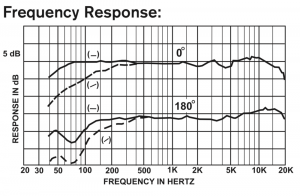
Sensitivity: -56.5 dB
Common uses:
Review and Testing:
C214 ( matched pair – can be developed together)
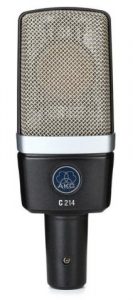
Cost: $400
Type: Condenser Mic
Frequency Response Curve:
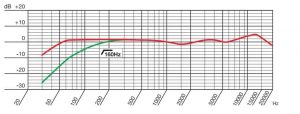
Sensitivity:
Common uses:
studio recordings ; vocals
OR
acoustic guitar and pianos.
Examples:
review and testing: